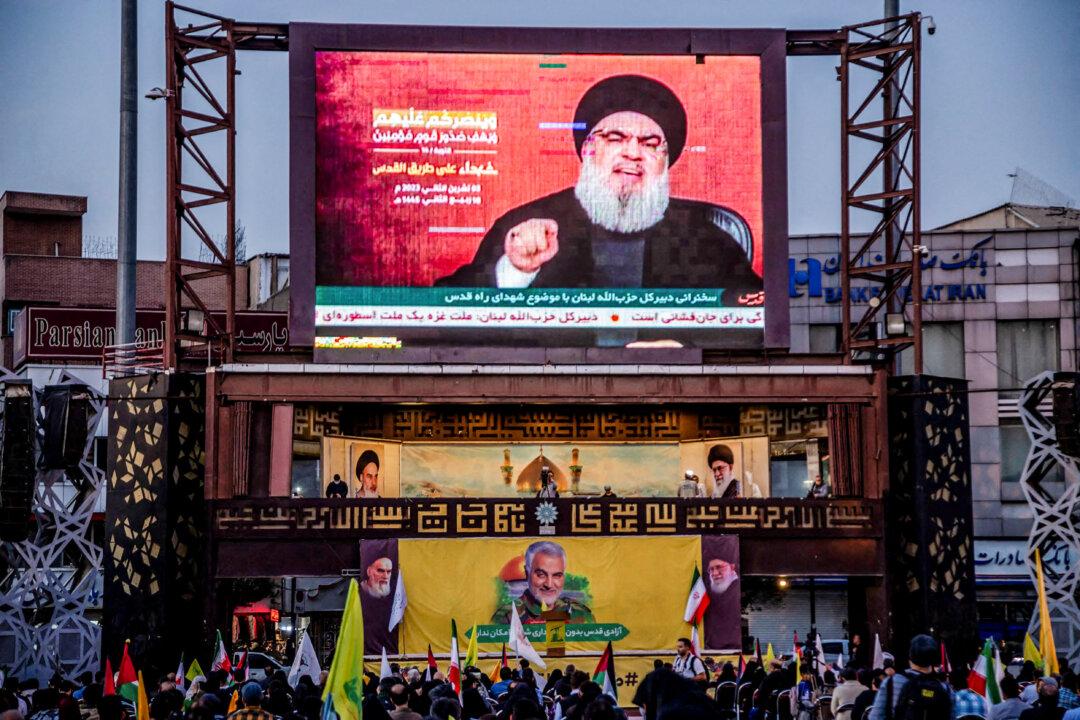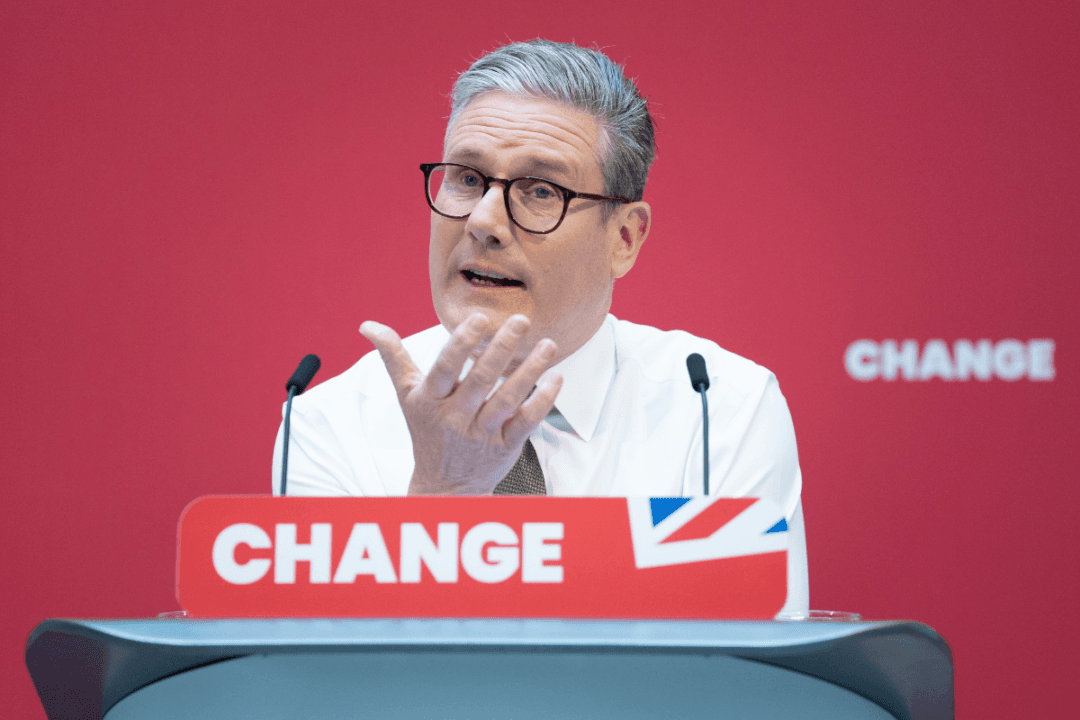Mast listing, melted by 1,000-degree heat, as fire crews continue to battle the flames in San Diego harbor, the USS Bonhomme Richard faces an uncertain fate.
Whether or not the ship ultimately survives the fire that broke out over the weekend, according to analysts, it will still leave a strategic hole in the pacific in a year or two—which the Navy will have to fill by lengthening deployment schedules of other ships.
The 844-foot amphibious assault ship was being refitted to be optimized as a so-called Lightning Carrier: one of a handful of ships that can bring the next-generation Lightning F-35 jet to the pacific theatre.
The F-35 is really three different planes: one that can take off from land; one that can take off from U.S. aircraft carriers; and one that can take off and land vertically from amphibious ships like the Richard Bonhomme.

“About half of the amphibious assault ships are able to carry the F-35 B and the Bonhomme Richard was one of them,” Bryan Clark, senior analyst at the Hudson Institute told The Epoch Times. “So that’s a big impact on the ability of Marines to keep fifth-generation fighters forward deployed.”
“The impact will be felt probably in a year and a half to two years when the Bonhomme Richard would have been returning to operations and deploying,” said Clark.

“The ships on the West Coast are going to have to deploy a little bit longer and a little bit more often to fill in the gap.”
Clark says that larger aircraft carriers are not carrying the sister F-35 C yet.
“The stopgap would be probably to deploy the existing F-35 capable amphibious assault ships more often or for longer. The Navy wants to maintain essentially a continuous presence of F-35-capable amphibious assault ships in the Pacific.”
‘Ship Structure is Safe’
But he says it is too early to make long-term projections, before a detailed assessment of the damage.We have investigated the four main engineering spaces and found no major damage,“ said Rear Admiral Philip Sobeck according to the statement. ”There is no threat to the fuel tanks, which is well-below any active fires or heat sources. The ship is stable and the structure is safe.”
The time needed to repair or replace the ship will likely mean other adjustments, says Wood. “Other ships in the fleet must stay at sea for longer than currently planned, defer scheduled maintenance for a while as shipyard availability is adjusted, or lower priority missions are canceled or not pursued. The United States’ key security interests in the region will always be covered.”

Wood says that the F-35B can still be flown from other ships that are not optimized to support them. “The absence of Bonhomme Richard will not mean the loss of F-35B capability for Navy-Marine Corps deployments to the region,” he said via email.
“The remaining large-deck amphibious warships will adjust to account for the absence of the Bonhomme Richard.”
“It has a huge impact,” said Hendrix. “Bonhomme Richard has been in this overhaul for two years getting these upgrades to operate F-35Bs. She has about eight more years of life left in the hull, and so she was a central cog in our Pacific operational deployment plan for the next eight-to-10 years.”
Stealth Fighters and Mini Carriers
The F-35 is regarded by many as the most advanced fighter jet in service—and one of only three so-called “5th generation” fighters in the world.Developed as a joint forces program, the stealth jet was envisioned as the next-generation backbone of fighter fleets of the navy, air force, and marine corps, with an efficient single-engine and universal design aimed at cutting production and running costs.

But the original simple vision of a jack of all trades morphed, with the program splitting into what many analysts say is really three different aircraft with very different technical requirements.
The party trick of the F-35 B is to perform vertical take-off and landing. That capability has effectively turned the ships originally conceived as amphibious assault ships into potential “mini carriers” or “Lightening carriers.”
Other countries are using the F-35 B variant on their full-size carriers, which lack the sling-shot system on U.S. carriers that will work with the F-35 C.
The Bonhomme Richard is an older class of amphibious ship, the Wasp-class. The latest America-class ships cost around $3.5 billion.





